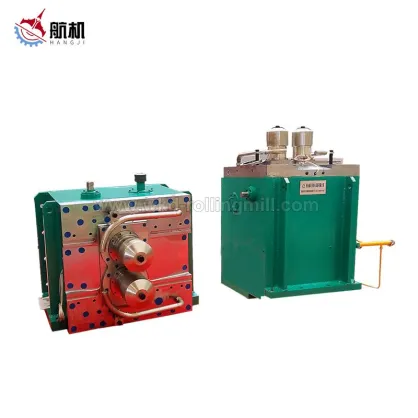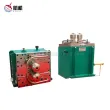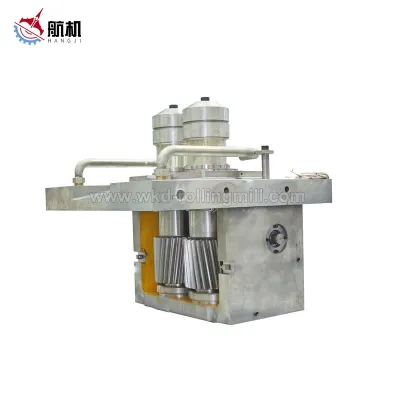Ø320 High Speed Bar Cantilever Mill
Product Application: high-speed wire rod production line finishing mill
Product Description
Technical description of high-strength ultra-low temperature ø320 high-speed bar cantilever rolling mill
Rolling mill performance: rolling at low temperature
1. Maximum allowable rolling force: 550KN
2. The maximum allowable rolling torque: 30.5KN.M
3. Roll diameter: Max317.5mm-Min300, inner hole Φ175mm, thickness 125mm
4. Roll gap: adjustment amount 35mm
5. The finished product specification is: Φ12-Φ32
6. Maximum rolling speed: Φ12---30m/s; Φ32---11m/s
7. Rolled temperature range of 780C︒----830C︒;
8. The use of tungsten carbide roll ring improves the surface quality of the finished product and increases the amount of steel passing through a single groove.
Rolling mill performance advantages:
1. Using low-temperature rolling, the grain size of the product is increased from normal temperature rolling from grade 7 to grade 9. The columnar crystals are crushed, and the crystal orientation becomes flake or granular after crushing, which improves various physical properties (yield strength, tensile strength, elongation, etc.)
2. Through the temperature control rolling process, the rolled piece is cooled to around 780C, and then cooled slowly to obtain some fine microstructure components of sostenite and trositic, which avoids the formation of martensite and coarse pearlite microstructure which is caused by strong water permeability and natural cooling.
3. When rolling rebar HRB 400E, according to the requirements of the new national standard, metal elements of V, NI, TI should be added to the molten steel, and the solid capacity strengthening of the metal bond should be increased to improve the physical performance of the steel. After adopting the high-strength rolling mill low-temperature process, without increasing the trace metal elements of V, NI, TI, it can also reduce the content of silicon and manganese alloys in the molten steel, and can ensure the various performance indicators of HRB400E. Compared with the traditional rolling process, the alloy consumption is reduced by about 30%.
4. It avoids the defects caused by the rolling method of the forced water penetration process, the surface of the steel bar is easy to rust, and the martensite closed loopphenomenon
5. The rolls are made of tungsten carbide, the surface quality of the finished product after rolling is improved, and the consumption of the rolls is reduced.
View More







